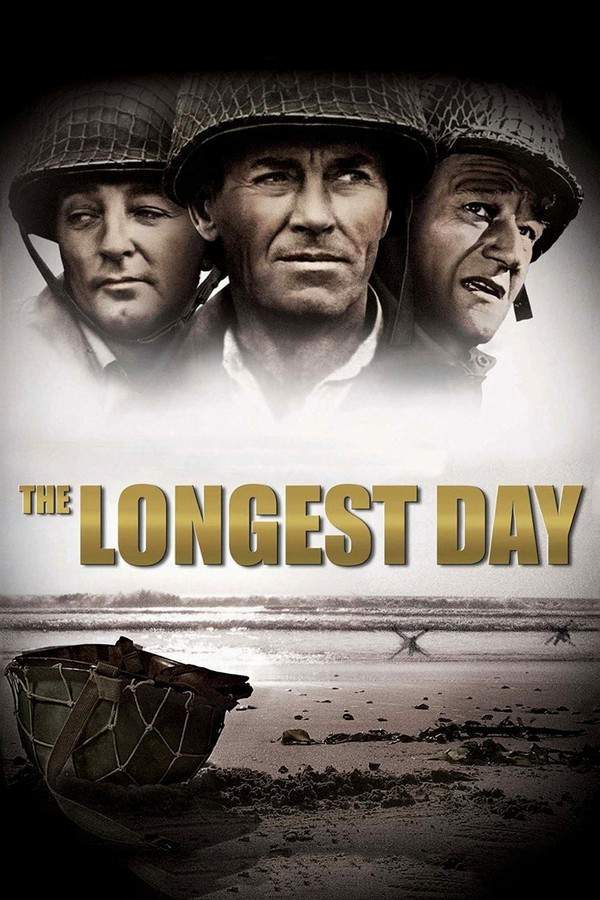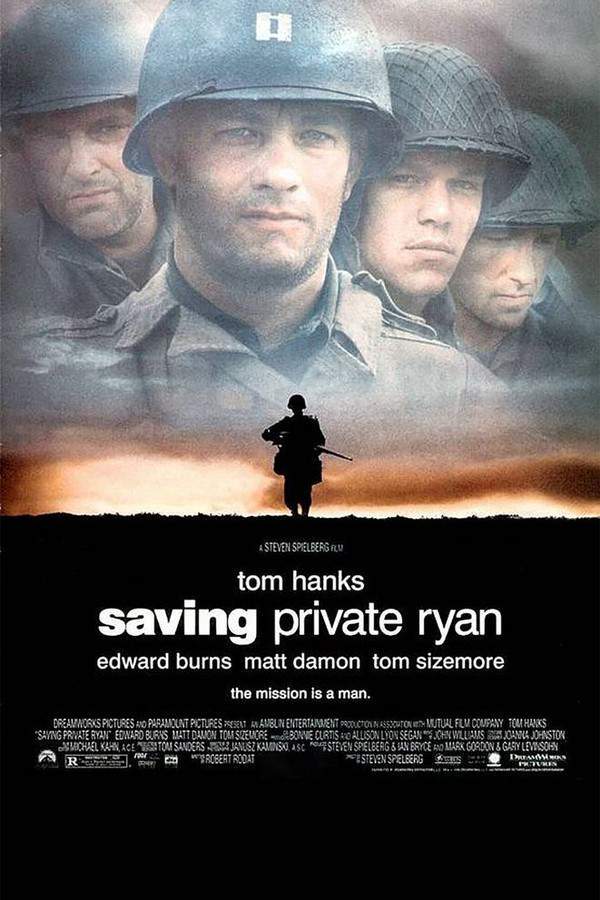
The Longest Day
Year: 1962
Runtime: 178 min
Language: english
Director: Andrew Marton
This intense 1962 film honors the courage and dedication of Allied forces during the crucial Normandy Invasion of World War II. The story meticulously details the anxious build-up to June 6, 1944, showcasing the preparations and experiences of American, British, and German participants. Through multiple perspectives, the movie captures the tension and drama of D-Day, from paratroopers dropping behind enemy lines to the naval assault on the beaches and the fierce fighting that followed.
Warning: spoilers below!
Haven’t seen The Longest Day yet? This summary contains major spoilers. Bookmark the page, watch the movie, and come back for the full breakdown. If you're ready, scroll on and relive the story!
The Longest Day (1962) – Full Plot Summary & Ending Explained
Read the complete plot breakdown of The Longest Day (1962), including all key story events, major twists, and the ending explained in detail. Discover what really happened—and what it all means.
Shot in a compelling docudrama style, this film delves into the harrowing days leading up to D-Day, showcasing pivotal events across both the Allied and Axis fronts during this historic military endeavor. As the Allies anxiously await a respite from the relentless poor weather conditions, they also brace for the reaction of the German forces tasked with defending northern France.
At the forefront of the Allied forces is Lieutenant Col. Benjamin H. Vandervoort, portrayed by John Wayne, who commands a determined parachute infantry division. As tensions rise, Benjamin relays crucial intelligence to Brigadier Gen. James M. Gavin, played by Robert Ryan, the commanding officer of the airborne division. His mission is monumental: seize Sainte-Mere-Eglise, a strategic point lying along the sole route that could be exploited by the Germans to target the allies’ northern flank. With only a mere four-mile descent to navigate before reaching the town, Vandervoort must confront the fierce natural obstacles posed by swamps that the Germans have deliberately flooded. Demonstrating quick thinking and innovation, Benjamin supplies his men with clicking toys to ensure they can identify one another amidst the chaos of darkness.
Meanwhile, Brigadier Gen. Norman Cota, played by Robert Mitchum, serves as the assistant commander of the 29th Infantry Division. He grapples with growing unease as assault forces remain cooped up aboard their ships for an extended three-day period, waiting for a much-needed break in the weather. It becomes increasingly evident that the decision of whether to proceed with the invasion lies squarely on the shoulders of General Dwight Eisenhower, depicted here as a steadfast leader in a pressure cooker situation.
Flying Officer David Campbell, portrayed by Richard Burton, represents the relentless spirit of the RAF as he also plays a vital role amid the unfolding crisis. Alongside him is Group Capt. J. M. Stagg, a dedicated meteorologist whose assessments are critical in determining the fateful go-no-go decision.
Within the ranks of the German command, Generalfeldmarschall Gerd Von Rundstedt, as portrayed by Paul Hartmann, contemplates potential threats while Major Werner Pluskat, played by Hans Christian Blech, oversees the coastal defenses. Concurrently, military intelligence officer Oberstleutnant Helmuth Meyer grows increasingly convinced that an imminent attack is on the horizon. However, his superiors remain hesitant, fearing that the poor weather will thwart any invasion attempts.
As dawn approaches on June 6th, multiple storylines unfold, commencing with the crucial airborne missions that signal the onset of D-Day. British troops, in a daring glider operation, aim to secure Pegasus Bridge, while Major John Howard, played by Richard Todd, is entrusted with a daunting task—maintaining control of the bridge to prevent German demolition, which would cut off the Allies’ pathway into Normandy.
Chaos ensues as American paratroopers drop into Sainte-Mere-Eglise, many dispersed and subjected to harrowing conditions—half of them landing in swampy hell while the others face fierce resistance within the town itself. The valor exhibited by the French Resistance, featuring characters such as Father Louis Roulland, played by Jean-Louis Barrault, showcases their dedication to sabotaging enemy operations, as they work tirelessly to disrupt communication and troop movements.
The early hours underscore the uncertainty and miscommunication rippling through the German hierarchy as they grapple with the question of whether this could be a mere feint or indeed the actual Allied invasion. With Hitler sluggishly asleep, significant decisions remain unmade, ultimately proving catastrophic in the decision-making chain.
The stark reality is poignantly captured as the Allied forces mobilize—through the sweat and blood of their soldiers, they manage to breach defensive lines, culminating in Benjamin’s relentless push through Sainte-Mere-Eglise after fierce engagements. The psychological weight is palpable as they confront the aftermath of heavy losses amongst their ranks.
In a brilliant montage that encapsulates the united Allied effort during this tumultuous invasion, the film closes on a hopeful note, highlighting diverse units consolidating their positions along the beaches, ready to march forward into the heart of France on their journey towards liberation and the eventual confrontation with tyranny.
Last Updated: January 19, 2025 at 18:49
Unlock the Full Story of The Longest Day
Don't stop at just watching — explore The Longest Day in full detail. From the complete plot summary and scene-by-scene timeline to character breakdowns, thematic analysis, and a deep dive into the ending — every page helps you truly understand what The Longest Day is all about. Plus, discover what's next after the movie.
The Longest Day Timeline
Track the full timeline of The Longest Day with every major event arranged chronologically. Perfect for decoding non-linear storytelling, flashbacks, or parallel narratives with a clear scene-by-scene breakdown.

Characters, Settings & Themes in The Longest Day
Discover the characters, locations, and core themes that shape The Longest Day. Get insights into symbolic elements, setting significance, and deeper narrative meaning — ideal for thematic analysis and movie breakdowns.

Similar Movies to The Longest Day
Discover movies like The Longest Day that share similar genres, themes, and storytelling elements. Whether you’re drawn to the atmosphere, character arcs, or plot structure, these curated recommendations will help you explore more films you’ll love.
Explore More About Movie The Longest Day
The Longest Day (1962) Scene-by-Scene Movie Timeline
The Longest Day (1962) Movie Characters, Themes & Settings
The Longest Day (1962) Spoiler-Free Summary & Key Flow
Movies Like The Longest Day – Similar Titles You’ll Enjoy
Overlord (2018) Plot Summary & Ending Explained
Saving Private Ryan (1998) Complete Plot Breakdown
Operation Dunkirk (2017) Story Summary & Characters
D-Day 6.6.1944 (2004) Complete Plot Breakdown
Operation Overlord (2021) Full Summary & Key Details
Japan’s Longest Day (1967) Full Summary & Key Details
Hell in Normandy (1968) Film Overview & Timeline
Battle of the Commandos (1969) Detailed Story Recap
The Big Parade (1925) Ending Explained & Film Insights
D-Day the Sixth of June (1956) Detailed Story Recap
The Long Day’s Dying (1968) Story Summary & Characters
Weekend at Dunkirk (1964) Film Overview & Timeline
Up from the Beach (1965) Detailed Story Recap
The True Glory (1945) Film Overview & Timeline
Apocalypse: D-Day (1000) Spoiler-Packed Plot Recap

















